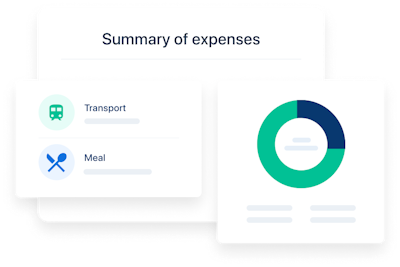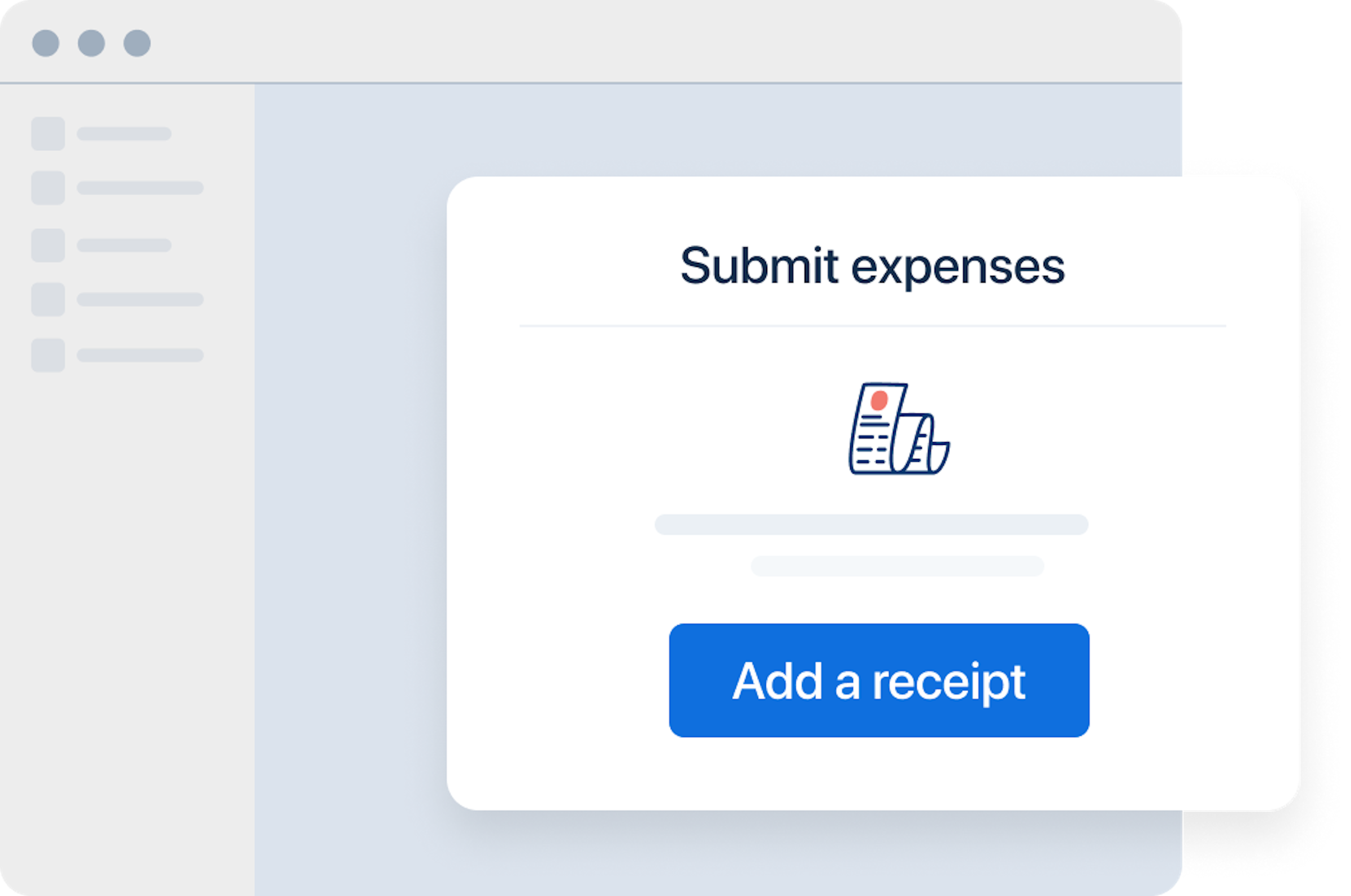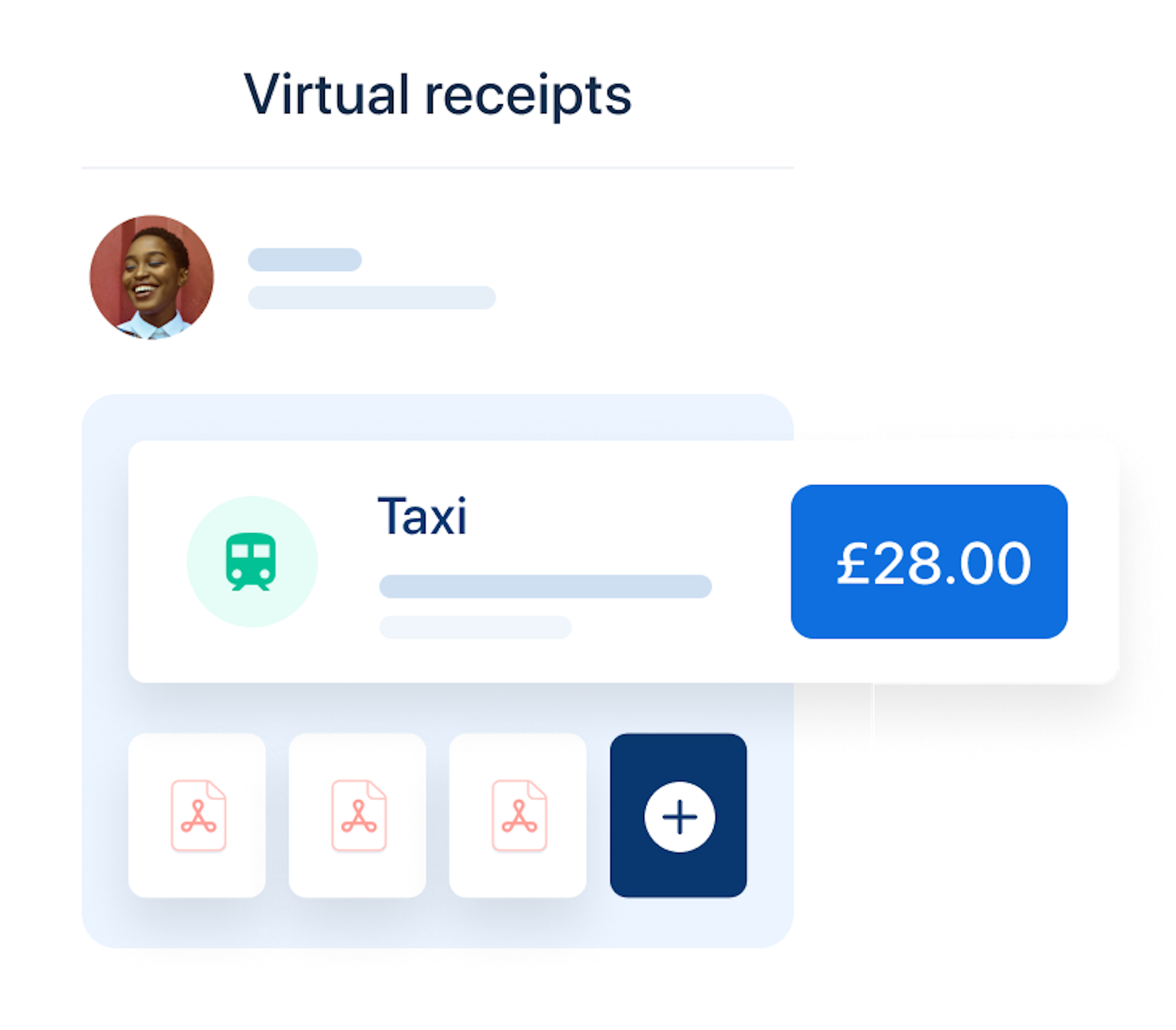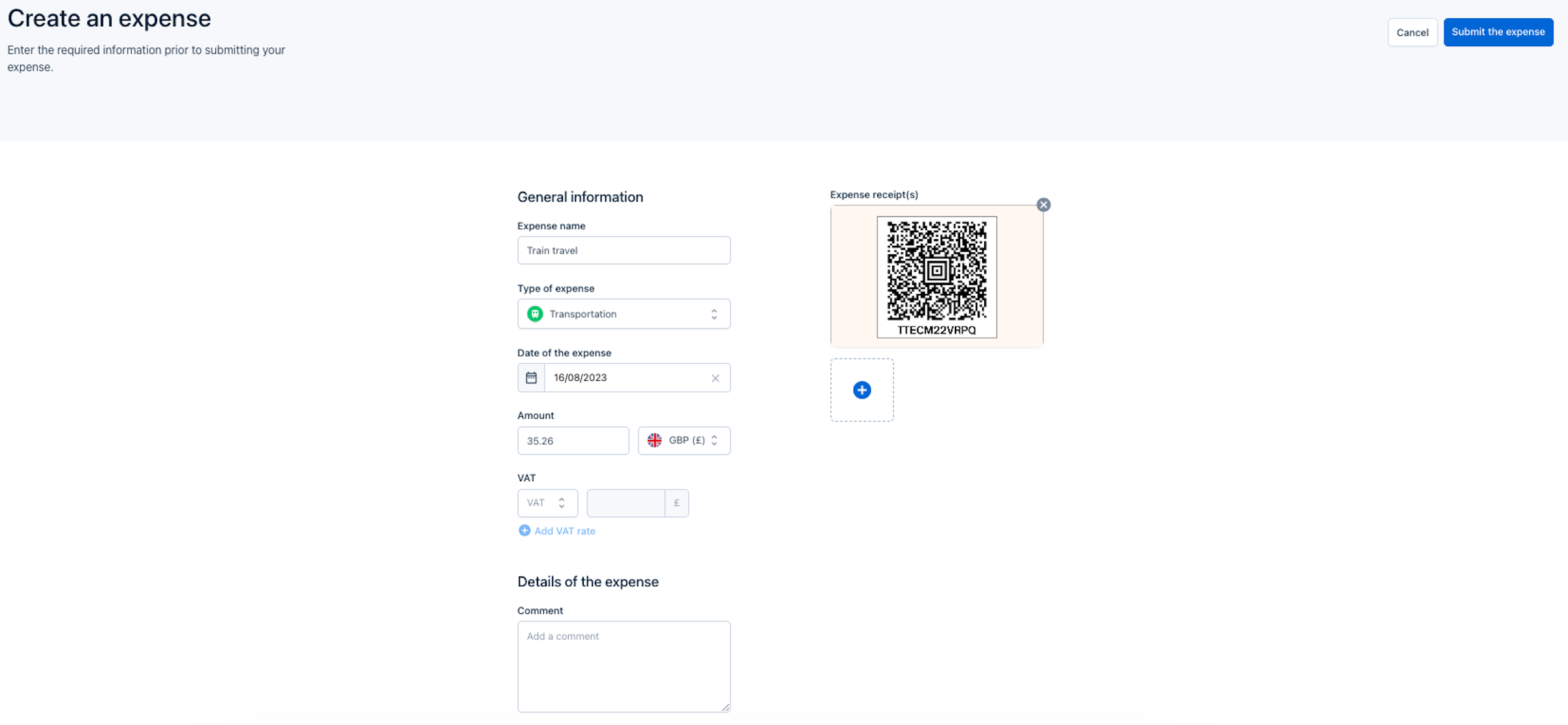A Guide to Expense Reimbursement For Employers


No matter what size of business you work in, if you are responsible for the finances or people within it, then you’ll need to be involved in the reimbursement of expenses your staff incur on company time. This doesn’t mean you’re paying for their lunch every day, rather that you’ll need to reimburse items such as travel, accommodation and subsistence required when they are away from their usual place of work on company duty.
Increasingly, in the world of hybrid work, companies are also contributing financially towards home working equipment such as keyboards and laptop stands, or for occasional train travel into the office.
But expense reimbursement is about much more than simply reimbursing your staff. It’s about creating a consistent company wide employee expense reimbursement policy, one that stipulates what constitutes an acceptable expense claim, how employees should submit a claim, fair use limits, how and when expenses will be paid back and, most importantly, how you will report expenses to HMRC.
We’ve put together the following guide to expense reimbursement for UK employers. As part of it, we’ve sought to answer some common questions around this seemingly menial topic, but one that you should be nailing as a business regardless.
What is expense reimbursement?
Put simply, expense reimbursement is when an employee is paid back for expenses incurred on work duties. And as alluded to above, whereas this tends to mean travel, accommodation and subsistence (food and drink), there are many other examples of expenses that we’ll go into in more detail below.
The reimbursement of expenses, however, is not a process of simply paying staff back - it also involves notifying HMRC of how you wish to handle and report those expenses. This can be done under a payrolling benefits arrangement - whereby expenses are paid through payroll and reported to HMRC each month together with the rest of your FPS (Full Payment Submission).
Alternatively, you may wish to submit a P11D form every July to declare all the expenses reimbursed (or benefits paid) for the previous tax year. This is the most logical approach if you don’t reimburse employees as part of their payroll (i.e.: if it’s done via bank transfer at another time in the month).

What are some examples of expenses that companies reimburse?
Companies may reimburse employees for common expenses incurred on company time, such as travel and accommodation. Some may also choose to contribute entirely or partially towards other items such as work uniforms, work-from-home computer equipment, commuting costs or fruit and veg boxes that they wouldn’t usually be expected to cover. Let’s get into it all below.
Travel & accommodation expenses
Even in the post-pandemic, hybrid world of work, staff will still need to travel for work purposes from time to time. In fact, it’s especially the case in the new world of work, where staff are increasingly spread out across the country. It could be that you’re organising a physical team ‘offsite’ or team building day away from the office, requiring staff to hop on the train. Indeed, here at PayFit, as a French headquartered operation, we often hop aboard the Eurostar to offsites over in Paris.
Other examples of travel expenses reimbursement include taxis - perhaps incurred when travelling across town from a hotel to a social event, for example a summer or Christmas party - or fuel costs. The latter may arise if you work as part of an events or hospitality company and are reimbursing staff for driving across the country with a van full of equipment.
And when staying away from home for a work commitment, you’ll need to factor in hotel costs as an expense reimbursement that will need overseeing.
Food and drink (subsistence) expenses
Many finance teams allocate a set amount of budget, for example each month or quarter, to teams for socials such as a team building day, lunch or after work drinks. In this case, the manager would typically pay for the outing and claim it back as an expense afterwards.
It may also be the case that a staff member is representing the company at an external event or trade show - in which case they will likely expect to be reimbursed for any meals - usually adhering to a budget set by the finance department.
Uniform / clothing expenses
Certain types of company, such as those utilising factories or building sites, or ones where a consistent uniform is required (think chefs, waiting staff or corporate drivers) may expect staff to purchase their own uniforms or protective gear, and claim back for it afterwards.
It could also be the case that a workplace union requires companies to reimburse staff for particular items, for example hard hats, work boots and tools.
Additional (increasingly offered and in-demand) expenses
As the battle to convince top talent to up sticks and join your business intensifies, so too does the need to provide an attractive package outside of simply remuneration.
Company expense reimbursement policies increasingly incorporate items that employees wouldn’t traditionally expect to receive back, but that will benefit their day-to-day experiences, wellbeing and job satisfaction. These might include contributions towards home working equipment (such as stand-up desks, laptop stands or meeting cameras), train travel into the office (to encourage face to face collaboration in a hybrid environment), or health and wellness subscriptions (gyms, mental health apps etc.).
Today’s workforce increasingly looks for and even expects perks such as these to be included within a company expense reimbursement policy. They could be the difference between a hot employee prospect choosing you over a competitor.

How have expenses traditionally been reported by staff?
Employee expense reimbursement has traditionally been quite a manual - and therefore time consuming, potentially error prone - process. Convention dictates that staff provide scans, or physical copies, of receipts to their manager, perhaps together with an expenses spreadsheet, to then be approved and reimbursed (or otherwise) by finance.
Taking a step back and looking at the steps involved, it’s easy to see how this approach could lead to an unnecessary degree of back and forth, not to mention errors.
What if the expenses claimant doesn’t submit all the required receipts, doesn’t complete their expenses spreadsheet with all the required information, or uploads incorrect figures? Cue having to take the time to draft an email asking them to resubmit the claim, and any subsequent chases that may be required. All of this distracts you from other work and can get pretty mind numbing after a while.
How are expenses reported with PayFit?
With PayFit, the process of employee expense reimbursement is drastically simplified. Our expenses module, included with the Standard and Premium packages, reduces the process to a matter of clicks. But how, you may ask?
Via a secure employee login, your staff can simply upload a picture of their receipt, the software detecting the amount and auto populating the field, or input the information manually. For enhanced reporting capabilities, all expenses must be categorised by claimants, which will allow you to better reconcile them later down the line.

Then, they’ll click ‘submit the expense’, their manager (or you) will be notified and the expense can either be approved or rejected.
And the best part? Once approved, the expense will be added to the employee’s next payslip instantly, meaning that it is paid through payroll automatically on the next payday. And that’s it! Expense reports and spreadsheets are eradicated overnight.
To save you time, you can define your company expense policy in PayFit, and only when an expense exceeding this is submitted are you alerted. This frees up your time for strategic and growth initiatives.
Are reimbursed expenses taxable?
Generally speaking, the kinds of expenses we’ve been talking about are not taxable. Many expenses are tax deductible, meaning that you can claim back the tax on these - for example computer equipment required to do a particular job.
In order for expenses to be treated as an allowable deduction for tax, two conditions must be met:
the employee is obliged to incur and pay it as holder of the employment and
the amount is incurred wholly, exclusively and necessarily in the performance of the duties of the employment.
But there are exceptions - most notably around ‘added extra’ expenses that aren’t necessary in order to carry out the duties of the job.
Sometimes referred to as benefits-in-kind, these include private health insurance, home phones that are also used for personal use, gym memberships and a weekly food allowance.
These types of expenses are taxable, and in most cases will require a P11D form to be submitted to HMRC each July for every applicable employee.
Do casual or zero hours workers qualify for expense reimbursement?
Those on zero hours contracts can be legally classed as employees or workers, and therefore qualify for the reimbursement of expenses incurred whilst performing company duties in the same way that a full or part-time staff member does.
Whilst there is no requirement in law for an employer to reimburse employees for expenses including travel, particularly where the worker in question has used their own car for business purposes, many do as a matter of good practice. Doing so will help create an attractive package for would-be zero hours workers.

How should I report expenses to HMRC?
Expenses can be reported either through your payroll (when submitting a Full Payment Submission each month) or online by using a P11D, for any expenses or benefits that were not payrolled. In this case, you must also submit a report for any Class 1A National Insurance you owe (a P11D(b)).
PayFit automatically generates a P11D at the appropriate time each year (which you can then submit to HMRC) and, as we have discussed above, all approved expense submissions are added to employee payslips automatically. What’s more, RTI (real time information) submissions, including Full Payment Submissions, are handled by PayFit on your behalf.
In short, reporting expenses to HMRC is one less thing you’ll have to concern yourself with when using PayFit.
What’s the best way to manage employee expense reimbursement?
There are a few good practice steps that you can take as a finance, HR leader or business owner to effectively manage expense reimbursement, to ensure consistency across the business.
These include:
creating a clearly defined expense reimbursement policy - for example timeframes for submitting expenses, financial limits for particular items, what can and cannot be claimed for, and how you will pay and report expenses;
making it simple for employees to request expense reimbursement - an expense management software, such as the one included with PayFit, is the best way to do this;
automating where possible - step forward again, PayFit!
To find out more about how PayFit makes the entire payroll process, including expense management, a breeze, why not book a short demo with one of our product specialists?
P11D Forms Explained: A Guide For UK Employers In 2025
How Much Does an Employee Cost UK Employers in 2025?

Bank Holidays UK: Employment Law Guide 2025
UK Statutory Notice Periods - An Explainer For Businesses
What Is OTE? How UK Businesses Can Unlock Its Potential






